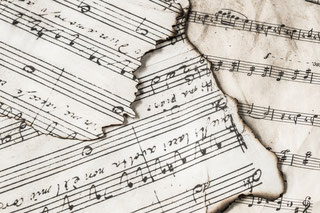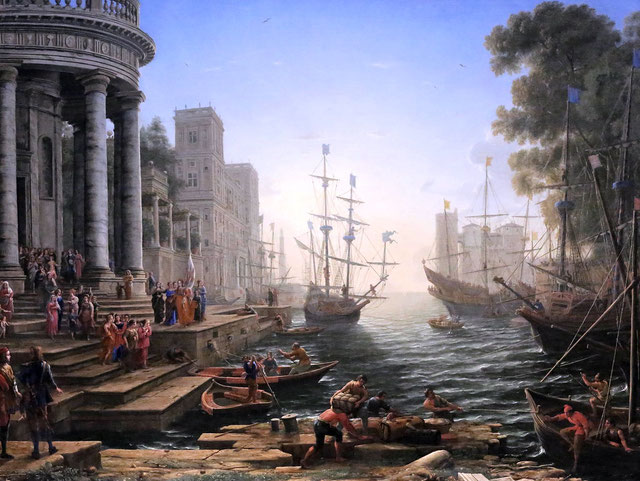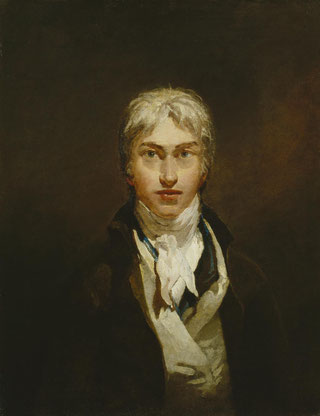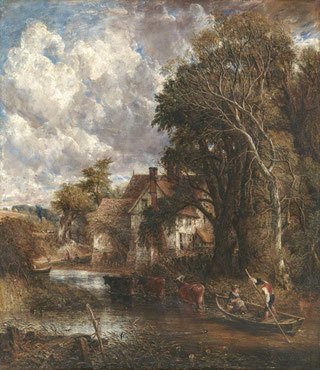 The musical and artistic universe of « Les Secrets de la maison de France »
The musical and artistic universe of « Les Secrets de la maison de France »
A novel in songs of today and yesterday

As the story unfolds, you will discover many song references… Depending on your emotions, your desires, the novel can be savoured with melodies in your head. Well, Madeline, Andréa, Adèle or Agnieszka have different tastes and do not belong to the same generations… The classification is in alphabetical order: first names, surnames, song titles… Er, no, it’s the opposite… Sorry, it’s the other way round… Anyway, it’s random and as you like.
Chasing Pavement d’Adèle
If I ain’t got you d’Alicia Keys
Asimbonanga de Johnny Clegg
Je m’voyais déjà en haut de l’affiche de Charles Aznavour
Billie Eilish
Di Doo Dah de Jane Birkin : « Et moi je reste plus plate qu’un garçon… »
If I were a tree de René Aubry, dans la version Blue Lady dansée par Carolyn Carlson
 Con Te, Partiro d’Andrea Bocelli
Con Te, Partiro d’Andrea Bocelli
Ce soir, j’attends Madeleine de Jacques Brel
Cézanne Peint chanté par France Gall.
Ariana Grande
Stone cold de Demi Lovato : « Si le bonheur c’est elle, j’en suis heureuse pour toi… »
Diana Krall
Là-bas, par Jean–Jacques Goldman et Sirima
She, d’Elvis Costello : « Où qu’elle soit, je dois être… »
Diego, Libre dans sa tête, chanté par Johnny Hallyday
Make you Feel my Love de Bob Dylan, chanté par Adèle : « Je pourrai te rendre heureuse, donner vie à tes rêves… »
J’ai demandé à la Lune d’Indochine
La musique Gonna Fly Now de Bill Conti du film Rocky I
Poker Face de Lady Gaga : « Je veux les prendre comme on le fait aux jeux du Texas… Non, il ne peut pas lire mon visage impassible… Oh, whoa, oh, oh… »
Destinée de Guy Marchand
Massive Attack, Norah Jones
Tubular Bells de Mike Oldfield
Glory Box de Portishead : « Je suis tellement fatiguée de jouer… Give me a reason to love you, donne-moi une raison d’être une femme. Je veux juste être une femme… »
 Tout va très bien Madame la Marquise, chanté par Ray Ventura
Tout va très bien Madame la Marquise, chanté par Ray Ventura
Sacred Spirit des Indiens d’Amérique
Sade
Love me tender, Love me true… d’Elvis Presley
Sexual Healing de Marvin Gaye : “Get up, Wake up…”
Shania Twain
Suzanne Vega
Taylor Swift
Cucurrucucu Paloma par Caetono Veloso
I will always love you de Whitney Houston
Je vais bien, tout va bien, je suis gai, tout me plaît, de Dany Boon
We are the world d’USA for Africa
La Marseillaise
Les comédies musicales de Broadway
La comptine Dans la forêt un grand cerf regardait par la fenêtre…
A novel in paintings with Claude, William, John and Piet, painters of colour and light.
Some of you have been interested in the painting techniques of Andréa and Adèle described in the novel. As I don’t want to spoil it, I refer you to the specialised websites on painting. But since you like stories, I might as well take this opportunity to tell you some anecdotes about the childhood and life of the painters mentioned in « Les Secrets de la maison de France ».

Let’s start with our friend Claude, as a whole part of our story is set in Lorraine. Claude Gellée, known as Claude « Le Lorrain » was born in Chamagne in the Vosges (in the Duchy of Lorraine) in 1600 and died in Rome in 1682. He was lucky enough to go to the village school, but he characterised himself by barely learning anything, not even how to write. In desperation, his parents apprenticed him to a confectioner.
< Port with the embarkation of Santa Úrsula – 1641
Unfortunately, they died when he was only twelve years old. At fourteen, Claude followed a troupe of pastry chefs to Rome. He found work as a pastry cook with the painter Agostini Tassi. For those with a sweet tooth, it was at this time that our friend Claude invented the « pâte feuilletée » (yes!).
He did various chores, including grinding his master’s colours. He observed him and then tried his hand at painting. Tassi was so amazed by his gifts that he began to educate him.
Let us pass over his irresistible rise to fame and his various trips to France and Switzerland. Claude painted landscapes, harbours with shipping scenes and was particularly interested in the effects of light. Pope Urban VIII and King Philip IV of Spain commissioned paintings from him. Fake paintings in his name began to circulate. To prevent forgeries, Claude le Lorrain invented an original and effective procedure. He reproduced each of his works in drawing form in a collection called Liber Veritatis (Book of Truth). For each painting, he specified the title, the date and the name of the commissioner. He listed all his works until his death, which amounted to almost 200 paintings.
Turner discovered the Lorrain when he was in his twenties at a collector’s house in London. He was so moved that he “felt all of a piece, became confused and burst into tears”, according to a contemporary.
Claude Le Lorrain was the first artist to place the sun directly in the centre of his work. Turner was inspired by his elder’s work on light, skies and water, and imbued his English landscapes with the Italian light of Claude’s paintings.

William Turner was born in London in 1775 and died in the same city in 1851. He was a painter, watercolourist and engraver. Belonging to the English Romantic movement, his work was marked by a daring innovative research which makes him, along with his contemporary John Constable, a precursor of Impressionism.
> Turner, known as the « painter of light », remains one of the greatest English masters of watercolour landscapes.
William was the son of a barber and wigmaker and his mother, Mary Marshall, came from a butcher’s family. She was neurasthenic and gradually lost her mind, entering an asylum in 1799 and dying five years later. One of the reasons for her madness was probably the death of William’s younger sister, born in 1778 who died before she was six. Despite this, it seems that Turner’s childhood was affectionate. He watched the boats dock on the Thames, and rubbed shoulders with the many artists who lived in the popular Covent Garden area.
As he was thought to be in poor health, he was sent at the age of ten in 1785 to live with one of his maternal uncles in Brentford, a small town on the banks of the Thames, and then to Kent, on the North Sea. He was educated there. It was at this time that he began to produce drawings which his father, who was very proud — and it was not at all, but not at all natural, at the time, to choose an artistic career in a family of craftsmen! — He would display them in his shop window and sell them for a few shillings.
His technique was based on the use of pencil sketches on the spot. He became interested in architecture and landscapes. At the age of 14, he got his first job as a draughtsman for an architect. He produced watercolours and became fascinated by the « topographical landscape » which was very much in vogue at the time. In 1789, at the age of fourteen, he entered the Royal Academy after an essay and a technical test.
A Londoner through and through, Turner retained a Cockney accent throughout his life. He is described as boorish or stingy and, as he grew older, became increasingly eccentric and taciturn. He was also a snuff enthusiast, a heavy drinker and a cat lover.
He had few friends and relatives, except for his father who, working for his son as his assistant and manager, lived with him until his death in 1829. He never married but had a relationship with the widow of a musician. He travelled extensively in Europe, unlike John Constable, who loved the London countryside.
William Turner never forgot his debt to Claude Lorrain, stipulating in the bequest he made to the National Gallery that two of his paintings had to be exhibited between two paintings by Claude Lorrain (« The Embarkation of the Queen Sheba » and « The Marriage of Isaac and Rebecca »). He gradually surpassed his master, pushing further and further the rendering of light, air vibrations and water reflections, creating wonderful luminous fades.
Turner bequeathed all his works to the British state and wished that a large part of his fortune be used for the construction of a hospice for elderly painters. He gave a sum to his housekeeper, another for the creation of a professorship of landscape teaching at the Royal Academy, etc., thus giving the lie to all those who had called him a miser.
Turner is also the painter of England’s awakening to the industrial age. In ‘Keelmen Heaving in Coals by night’, sailors unload coal from ships at night, by the light of huge torches, to meet the devouring demand of industry. The moon has taken the place of the sun in the centre of the canvas.

John Constable (1776-1837) was a contemporary of Turner and also a British landscape painter.
When our heroes, Madeline and Andrea, go to a cousin’s party in England, they travel through the county of Dedham, whose landscape, crossed by the River Stour, inspired John Constable.
John’s father was a wealthy grain merchant. Originally destined to become a priest and then to take over his father’s estate, John was finally sent to study painting at the age of 19 at the Royal Academy in London. He fell madly in love with a local young woman, but was unable to marry her for five long years because his father thought he was not talented enough. The couple had seven children and the death of his wife from tuberculosis left John devastated. He also managed to squander his wife’s entire inheritance on risky investments.
John strove to paint nature and objects as accurately as possible. For him, the history of artistic development was understood as a continuous progress in the direction of accuracy of vision. His method was simple. Beyond all techniques, he went for a walk to paint nature itself. Basically, the vision was only a duplication of the world. It is no coincidence that the birth of this aesthetic was contemporaneous with the optical work of the physicists Huygens and Kepler, in particular with the invention of the « camera oscura », which Constable used. The colours of his skies heralded a precursor of Impressionism.
As for Piet Mondrian, who unites our two lovers Madeline and Andréa, I can only refer you to “Les Secrets de la maison de France”.

